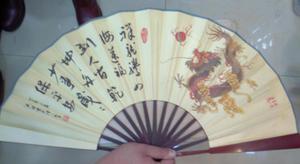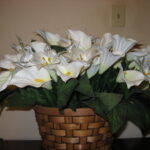Hand Fans
Purpose, composition, types
There are two main types of hand fan, one is flat and the other one is folded. Fans have two main purposes:
* To move air to creature comfort; or
* Use as a fashion accessories.
A hand fan is a very light and flat instrument control by the hand to cool the body or ward off insects. The fan is of tropical origin. It was believed that it was first discovered from the stems of palms or other leaves and branches.
There are three basic types of hand fans, “the feather”, “the folding fan” and “the brise”, constructed from rigid segments held together at the base by a rivet and joined at the top by a thread or ribbon. With each serving their purposes of keeping the user cool, to be in style, and etc.
Fans can be made out of different material. The frame of the fan can be made out of bamboo, wood, plastic or metal. The webbing can be made from paper, silk, feather, light weight material, wood, and etc. To add more features beads, crystals and ribbons can also be added.
For more valuable fans they can be made from shells such as mother of pearls, ivory, sandalwood (a fragrant wood) and etc. To add more style precious gemstones can also be added.
Chinese Hand Fans History
Past to Present
When exactly the Chinese invented hand fans is not recorded. But we do know that it was rather a discovery of the fanning function. It all started when a farmer was irritated by lots of flies and mosquitoes, he was so frustrated that he picked a big leaf with a long stem from a plant close by to drive the pests away. To his delight, his effort resulted in cooling air movements. Hence, the hand fan was invented.
It wasn’t long before Asian hand fans were used in many of the imperial ceremonies and today’s in many international performances that represents the Chinese tradition. More than 3,000 years ago, Chinese hand fans were made with bird’s feather, which gave them more graceful and heavenly phoenixes appearance when incorporated with dance movements at imperial ceremony.
Fans become very popular in during 202 B.C.-204 A.D. in the Han Dynasty. They handles were made out of bamboo from the Central China’s Hunan Province, while the best fan has surface of white silk from East China’s Shan-Dong Province.
Other then feather and silk fans, laborers used big round fans made out of grass in the summer to help to keep them cool. And in the society of aristocrats and scholars, fans were made from fine paper mounted on bamboo. Aristocrats and scholars found it interesting to paint their poetic and artistic expression on the surface. Those fans with a famous artist’s painting or calligraphy would be highly prized.
Fans of aristocrats and scholars became more as a decorative tool and a symbol for them rather then the purpose of keeping them cool. They would also often wave their fans to show off their grace when composing or thinking about poetry. When fan were not used, they were concealed inside the sleeves or hung from the waist.
Today, modern oriental hand fans come in all kind of styles and material, with sandalwood fan being the most popular. Ladies who hold it gracefully in her hand are seen with elegance and femininity. This is because of its outstanding characteristic and its distinct scent coming for the wood. This subtle fragrance gives the holder an enchanting and refreshing feeling where no expensive perfume can offer.
Hand fans today are rarely use for fashion purposes throughout China, but ladies still carry them in their handbag for cooling purposes in summer and also for performances of the traditional hand fan dance.


